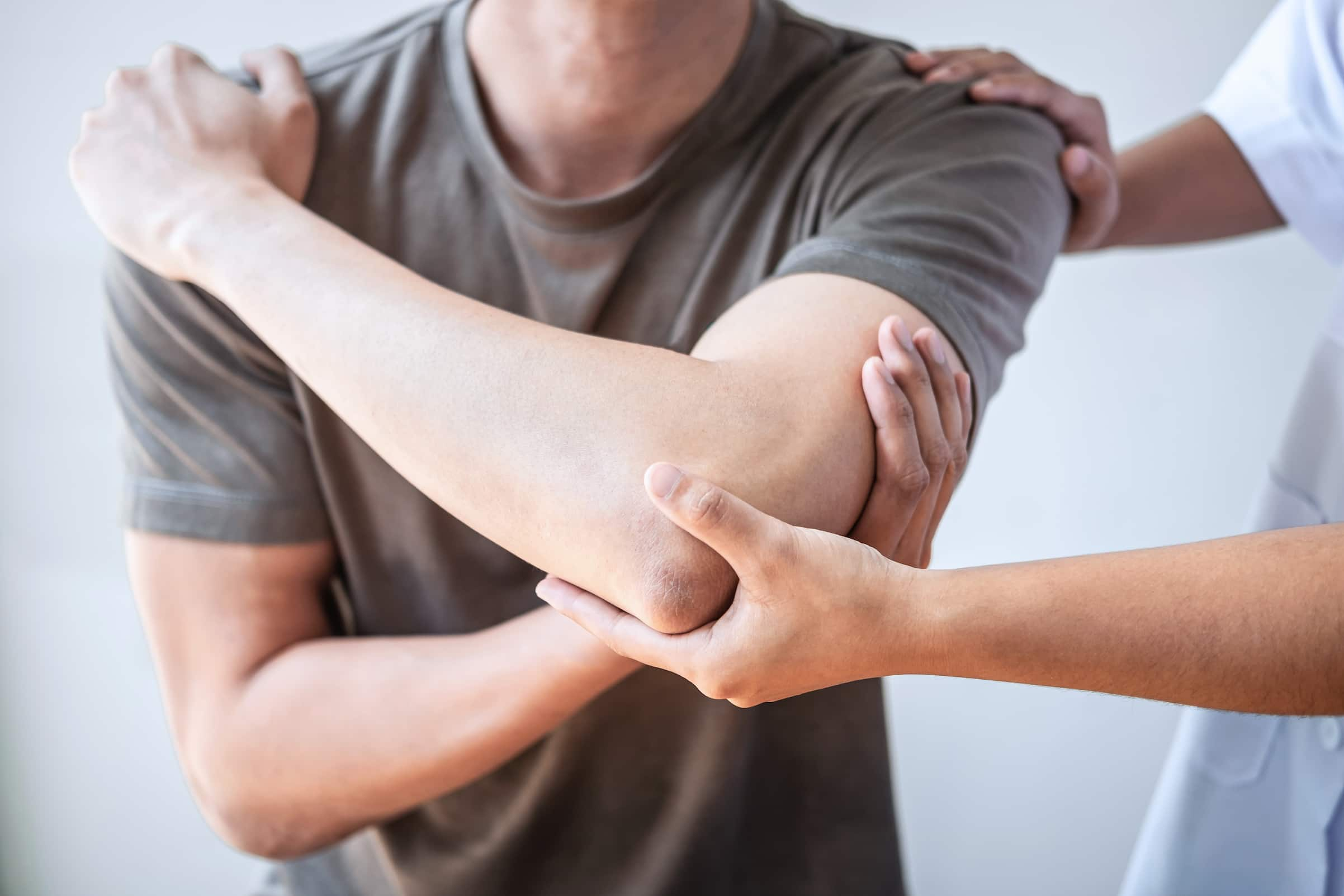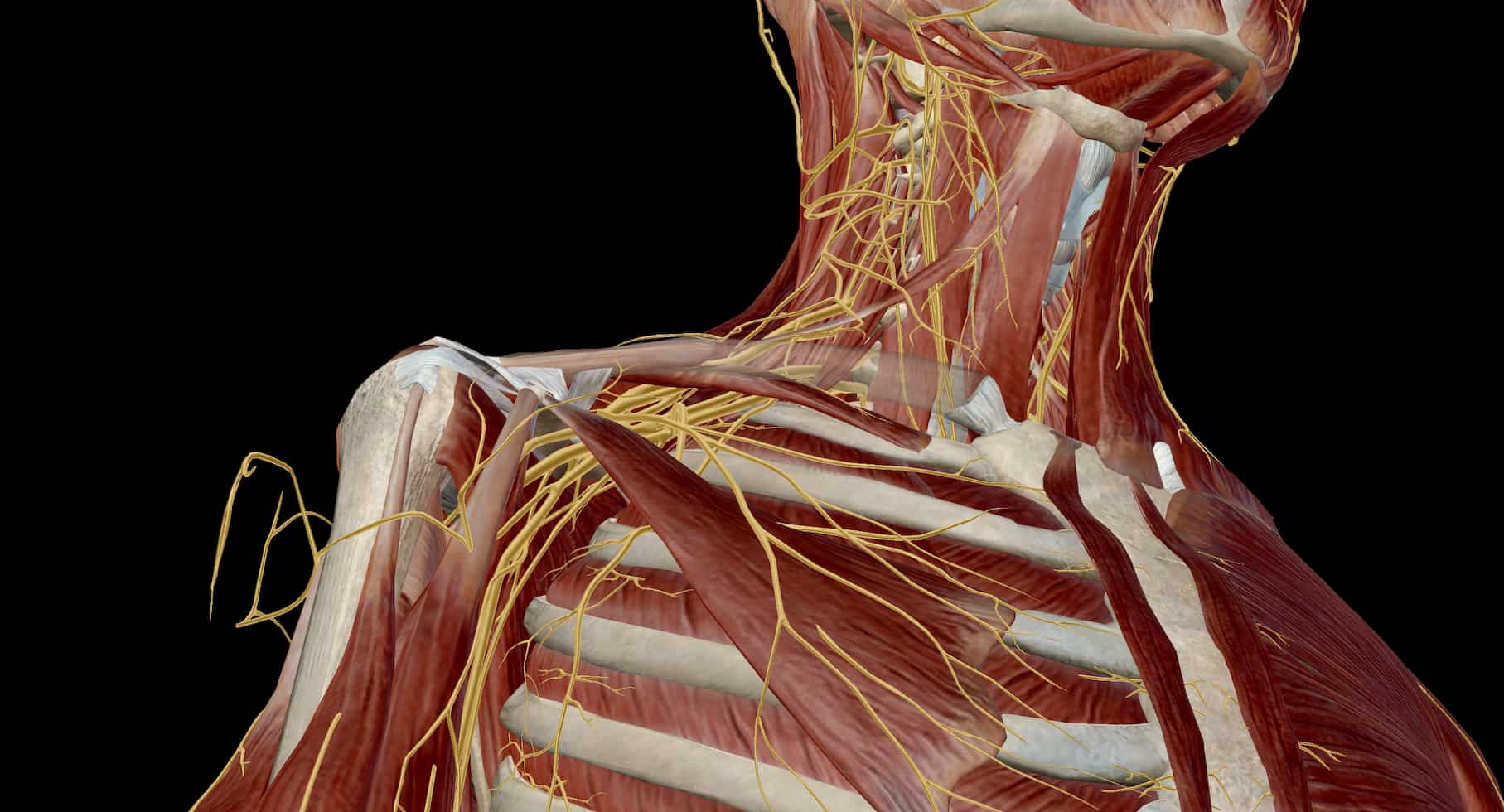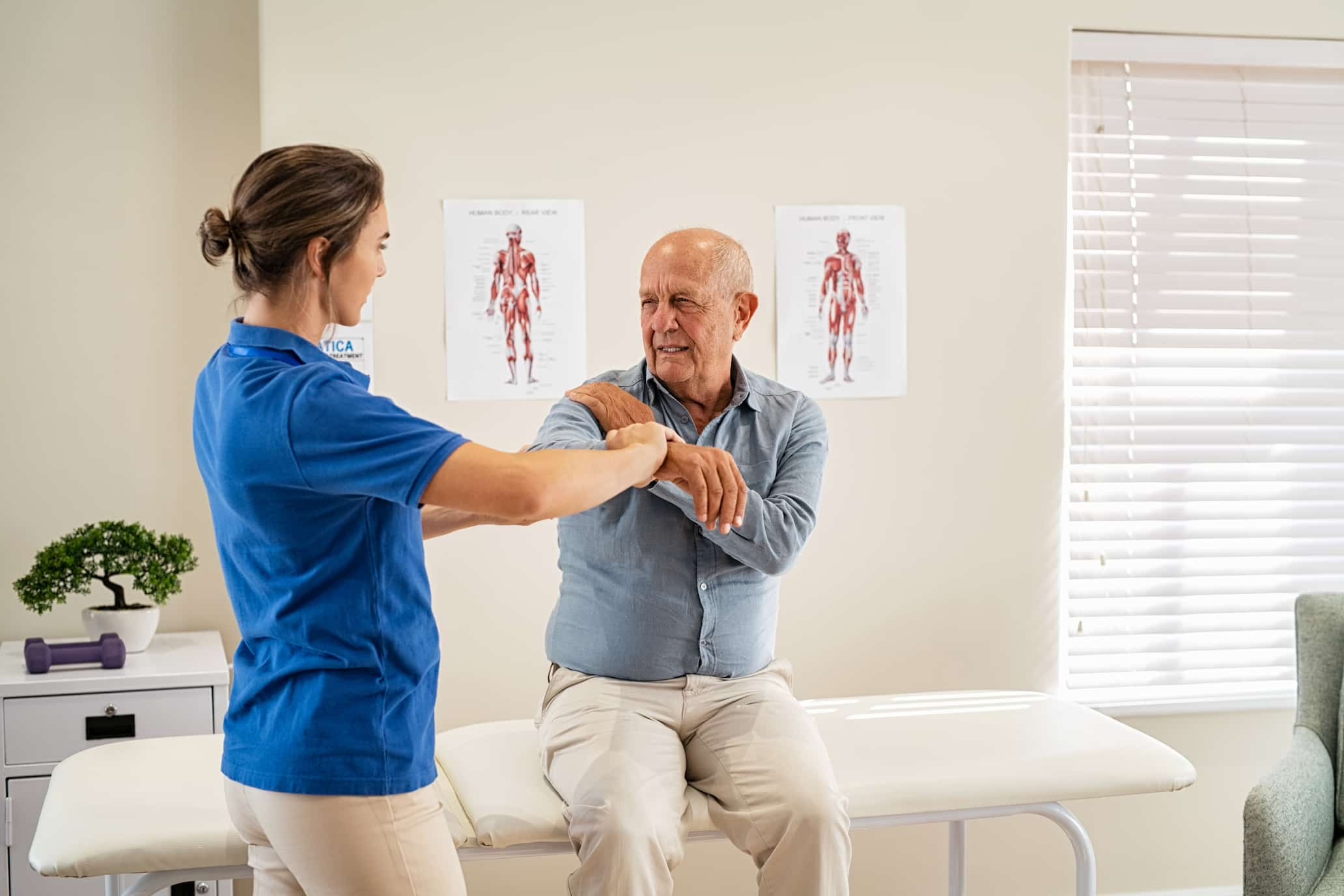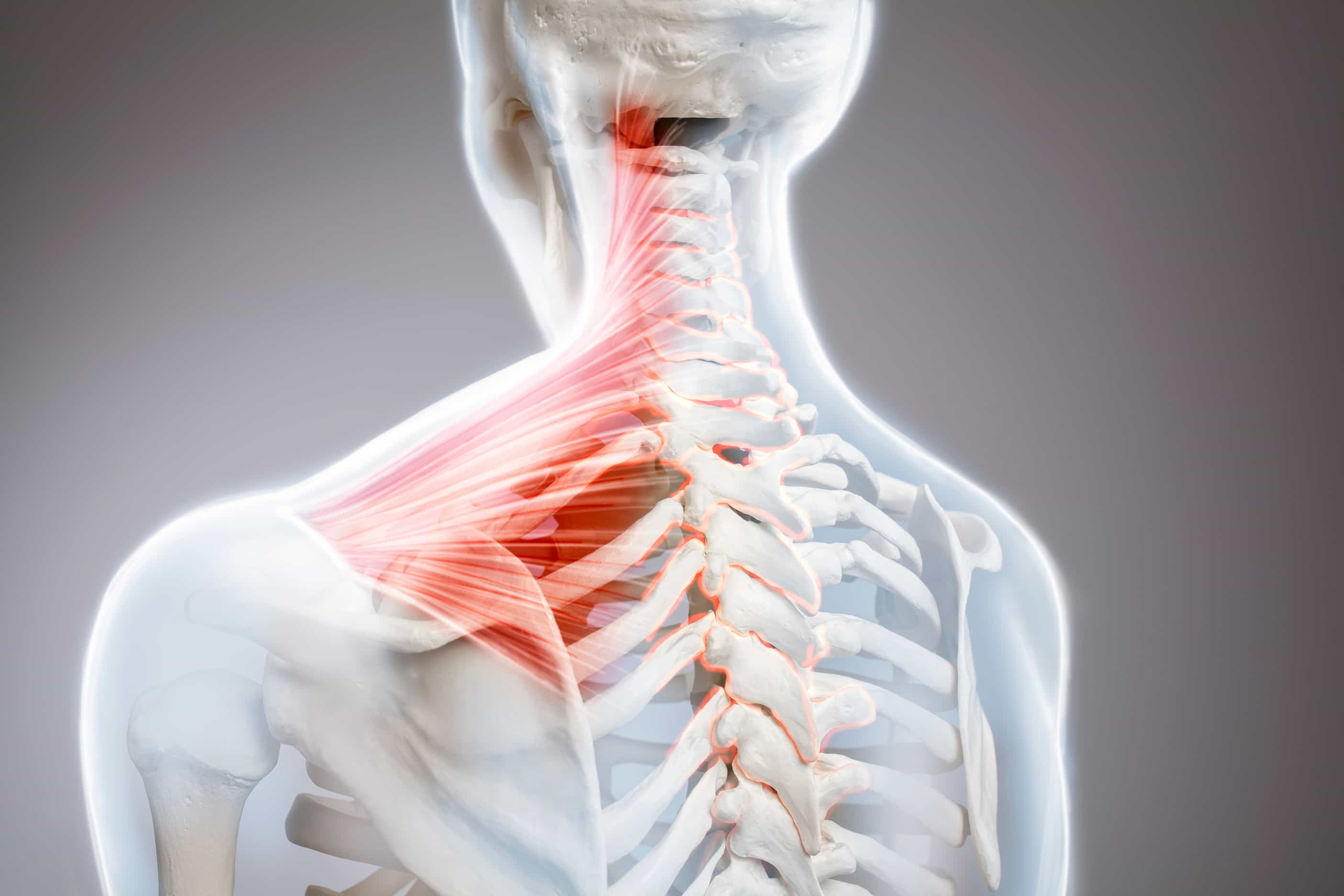Brachial Plexus Surgery in Turkey
Healthy Türkiye helps you find the best brachial plexus surgery in Turkey at affordable prices and adopts a 360-degree service approach in all areas of health through affiliated hospitals.
- Medical Treatment
- Neurosurgery in Turkey
- Spinal Fusion Surgery in Turkey
- Spinal Stenosis Treatment in Turkey
- Brain Surgery in Turkey
- Brain Tumor Surgery in Turkey
- Disc Replacement in Turkey
- Spinal Surgery in Turkey
- Deep Brain Stimulation in Turkey
- Hydrocephalus Treatment in Turkey
- Minimally Invasive Neurosurgery in Turkey
- Neurotrauma Treatment in Turkey
- Pediatric Neurosurgery in Turkey
- Vascular Neurosurgery in Turkey
- Brain Aneurysm Surgery in Turkey
- Craniotomy for Brain Tumor Resection in Turkey
- Lumbar Fusion Surgery in Turkey
- Lumbar Herniation Treatment in Turkey
- Lumbar Spine Surgery in Turkey
- Micro Lumbar Discectomy in Turkey
- Microdiscectomy Spine Surgery in Turkey
- Peripheral Nerve Surgery in Turkey
- Ventral Discectomy in Turkey
- Brachial Plexus Surgery in Turkey
- Neuro-Oncology Treatment in Turkey
- Neuroendoscopy in Turkey
- Radiofrequency Rhizotomy in Turkey
- Spinal Decompression Therapy in Turkey
- Stereotactic Radiosurgery in Turkey
- Spinal Cord Stimulator in Turkey
- Homepage
- Medical Treatment
- Brachial Plexus Surgery in Turkey

About Brachial Plexus Surgery in Turkey
Brachial plexus surgery in Turkey is for treating injuries that occur when the arm on one side of the body is dragged down and the head is moved to the other side. Pulling on the arm forcibly overstretches it, causing your arm to feel feeble. This sensation may last only a few minutes or it may last for days. The brachial plexus can be injured in a variety of ways. In a catastrophic vehicle accident or other trauma, it may be squeezed or cut. If the nerves are severed from the spinal cord, the arm and hand may become paralyzed permanently.
People who participate in high-energy sports such as football or soccer, as well as those who have suffered severe trauma or even gunshot wounds, have been hurt in this manner. Turkish doctors report that brachial plexus injuries are more common during motorbike season.
Other brachial plexus injuries are not the result of a specific accident or occurrence. A developing tumor can induce nerve compression, and inflammation can cause edema. Though uncommon, some neonates sustain brachial plexus injuries after birthing. It can happen if the baby’s shoulder collides with its mother’s pubic bone, if the baby’s head and neck are pushed away from the shoulders, or if the baby’s shoulders are overstretched during normal vaginal delivery.
Your provider will assess your symptoms and perform a physical examination to identify your problem. You may have one or more of the following tests to assist determine the extent and severity of a brachial plexus injury:
X-ray: An X-ray of the shoulder and neck can reveal whether you have fractures or other problems.
Electromyography (EMG) (EMG): During an EMG, your provider inserts a needle electrode into several muscles through the skin. The test measures the electrical activity of the muscles during contraction and rest. When the electrodes are implanted, you may experience some discomfort, but most people can complete the test without any difficulty.
Nerve conduction experiments: These tests, which are commonly performed as part of an EMG, evaluate the speed of conduction in the nerve when a tiny current is passed through it. This information indicates how well the nerve is functioning.
Magnetic resonance imaging (MRI): A high magnetic field and radio waves are used in this test to provide detailed pictures of the body in many planes. It can often demonstrate the amount of damage produced by a brachial plexus injury and can aid in determining the health of arteries crucial for the limb or its reconstruction. Magnetic resonance neurography, a new form of high-resolution MRI scan , could be used.
Myelography using computerized tomography (CT): To obtain cross-sectional images of the body, computerized tomography employs a succession of X-rays. CT myelography combines a contrast substance given during a spinal tap with a CT scan to obtain a detailed image of the spinal cord and nerve roots. When MRIs do not provide enough information, this test is occasionally used.
Typically, a brachial plexus injury affects only one side of the body. The severity of an injury is determined by a number of factors, including the force of the damage and the number of nerves injured. Because nerves perform distinct functions, which ones are harmed is crucial.

Brachial Plexus Surgery Procedure in Turkey
The brachial plexus surgery in Turkey is focused on a network of nerves that provides mobility and sensation to the shoulder, arm, and hand. The nerves that support the arm leave the spinal column high in the neck, while those that support the hand and fingers leave the spinal column lower in the neck . This nerve complex includes four cervical nerve roots (C5-C8) as well as the first thoracic nerve root (T1). These roots join together to produce three trunks. The upper trunk is made up of C5-C6, the middle trunk is made up of C7, and the lower trunk is made up of C8-T1.
Each trunk is divided into sections. Flexor muscles are supplied by half of all divisions worldwide (that lift and bend the arm). The extensor muscles are supplied by the others (that straighten the arm and bring it down). A brachial plexus birth injury is hypothesized to be caused by a delivery-related injury to the child’s brachial plexus. This injury may result in a loss of sensory and/or motor function in the affected arm. According to published data, a brachial plexus injury occurs in 1.5 out of every 1,000 live births.
Motor vehicle accidents, bike accidents, ATV accidents, sports, and other activities can all result in traumatic brachial plexus injuries. The degree of nerve damage ranges from a moderate strain to the nerve root breaking away from the spinal cord. Among the procedures are:
Neurolysis: Removal of the constrictive scar tissue that has formed around the nerve.
Neuroma Removal: When the neuroma is large enough, it must be removed and the nerve reattached using end-to-end procedures or nerve grafts.
Nerve Grafting: When the distance between the nerve ends is so great that a tension-free repair using the end-to-end approach is not possible, nerve grafting is utilized.
Neurotization: In most circumstances, this is employed when there is an avulsion. The repair is made with donor’s nerves. Parts of the roots that are still connected to the spinal cord can be used to replace avulsed nerves.
Isolated Nerve Transfers: Isolated transfers can be conducted on children from 12 to 18 months. A healthy nerve close to the target muscle is connected to the injured nerve. Additional operations to improve the overall function of the afflicted limb are available. Nonsurgical management is also a significant component of treatment.
Occupational and/or physical therapy, including a range of motion, strengthening, neuromuscular electrical stimulation, Kinesio Taping, joint mobilization, aquatic therapy, and the use of orthoses, is frequently prescribed.
Brachial Plexus Injury Reasons
Depending on the severity and location of the damage, the signs and symptoms of a brachial plexus injury can vary substantially. In most cases, just one arm is injured. The brachial plexus is a network of nerves that control arm and hand movement and feeling. A traumatic brachial plexus injury involves sudden damage to these nerves, which can result in weakness, numbness, or loss of mobility in the shoulder, arm, or hand. The brachial plexus runs from the neck to the upper chest and ends in the armpit. When the arm is forcibly pulled or stretched, this network of nerves is frequently injured. Mild brachial plexus injuries may heal on their own. More severe injuries may necessitate surgery to restore arm or hand function.
Less-severe Injuries
When the brachial plexus nerves are stretched or compressed during contact sports like football or wrestling, minor injury can occur. These are known as stingers or burners, and they can cause the following symptoms:
An electric shock-like sensation or a scorching sensation shooting down the arm
Numbness and tingling in the arm
These symptoms normally last only a few seconds or minutes, although they might endure for days or longer in some people.
More-severe Injuries
More severe symptoms are caused by injuries that significantly injure, tear, or rupture the nerves. When the nerve root is severed from the spinal cord, the most catastrophic brachial plexus injury occurs. More serious injuries can cause the following signs and symptoms:
Weakness or inability to use certain muscles in the hand, arm or shoulder
Complete lack of movement and feeling in the arm, including the shoulder and hand
Severe pain
The majority of traumatic brachial plexus injuries occur when the arm is wrenched or stretched violently. Falls, motor vehicle crashes, knife and gunshot wounds, and, most commonly, motorbike collisions can all result in harm. It is unknown how many brachial plexus injuries occur each year, although the number appears to be increasing globally. Increased engagement in high-energy sports, as well as greater rates of survival from high-speed motor vehicle incidents, may be contributing contributors to the rising number of these injuries.

We Care About Your Health
Healthy Türkiye provides the best for your health and comfort. You will feel privileged with us.
7/24 Quality Personal Assistance Throughout Your Journey
Customizable for You All-Inclusive Packages
Get the Right Advice for your Health
Types of Brachial Plexus Surgery in Turkey
The brachial plexus surgery in Turkey is focused on a network of nerves that control arm and hand movement and feeling. A traumatic brachial plexus injury involves sudden damage to these nerves, which can result in weakness, numbness, or loss of mobility in the shoulder, arm, or hand. The brachial plexus runs from the neck to the upper chest and ends in the armpit. When the arm is forcibly pulled or stretched, this network of nerves is frequently injured.
Mild brachial plexus injuries: They may heal on their own. More severe injuries may necessitate surgery to restore arm or hand function. The purpose of brachial plexus surgery is to alleviate discomfort while also restoring sensation and motor function to your shoulder, arm, and hand. The type, location, and extent of nerve injury, as well as your overall health and the impact of injury on your capacity to work and quality of life, are all factors considered in surgical methods. Your surgeon may propose the following procedures:
Brachial Plexus Nerve Repair: When a nerve is severed or severed, the surgeon may be able to reattach it by stitching the ends back together. This is done using a microscope and small, specialized tools.
Brachial Plexus Decompression and Neurolysis: When a nerve is compressed but otherwise healthy, decompression surgery can assist reduce the pressure on the nerve as well as address associated symptoms and loss of function. This can be accomplished by removing scar tissue or adhesions from surrounding the wounded nerve (a treatment known as neurolysis).
Nerve Grafting Surgery for Brachial Plexus Injuries: When a nerve is badly wounded or scarred, it may no longer be able to transmit impulses from the brain to the arm and hand, resulting in paralysis. In this situation, surgeons can remove the injured nerve segment and replace it with a segment of another component of the body’s disposable sensory nerve, such as the sural nerve in the leg. A nerve transplant is a treatment that helps to establish a bridge that replaces the injured segment of the nerve and offers a channel for nerve regeneration.
The brachial plexus is formed from five nerves that originate in the spinal cord at the neck. The plexus connects these five nerves to the nerves that supply sensation (feeling) to the skin and allow movement in the arm and hand muscles. Each side of the body has a brachial plexus. Each of the brachial plexus’s five nerves has a specific purpose, such as energizing muscles or transmitting sensory information from the hand to the brain. Because each nerve serves a particular purpose, the location of nerve damage within the plexus is critical for predicting consequences and arranging therapy.
Recovery from Brachial Plexus Surgery in Turkey
Brachial plexus surgery in Turkey aims to repair traumatic injury to the Brachial Plexus. The Brachial Plexus is a network of nerves that runs from the spine through the neck, shoulders, armpit area, and into the arm. Shifting and grafting a nerve that develops at the spine and goes to the Brachial Plexus restoring the injured nerves.
It will take six to eight months for the patient to fully recover from the procedure. The patient’s strength will improve over the course of two to three years. If the recovery is taking longer than predicted, another electromyography is required. This will clarify whether the nerves are appropriately growing and repairing. Ensure that the following items are available:
Incision dressing changes
Alcohol gel for disinfection
Sterile gauze pads
Easy-to-remove medical tape
Tylenol, etc.
In certain circumstances, the recovery may involve some pain. If there is pain, medication is administered.
To prevent arm movement, the patient will need to wear an arm sling. This will also help to alleviate pain.
Light daily activities at home are advised.
The patient should begin physiotherapy around two weeks after the procedure.
Despite the fact that brachial plexus injuries can be severe and difficult to manage, a team approach to therapy has resulted in significant gains in patient function. Although present technology cannot return patients with flail limbs to their pre-injury state, restoring any arm function is a significant step forward. Newer procedures for healing or transferring nerves, as well as novel drugs or materials that promote and stimulate healthy nerve regeneration, are among the future breakthroughs in the treatment of these injuries.

2026 Cost of Brachial Plexus Surgery in Turkey
All types of medical attention, like brachial plexus surgery, are very affordable in Turkey. Many factors are also included in determining the cost of brachial plexus surgery in Turkey. Your process with Healthy Türkiye will last from the time you decide to have brachial plexus surgery in Turkey until the time you are fully recovered, even if you are back home. The exact cost of brachial plexus surgery in Turkey depends on the type of operation involved.
The cost of brachial plexus surgery in Turkey does not demonstrate many variations in 2026. Compared to costs in developed countries like the United States or the UK, brachial plexus surgery costs in Turkey are relatively low. So, it’s no wonder patients from across the world visit Turkey for brachial plexus surgery procedures. However, price is not the only factor affecting choices. We suggest looking for hospitals that are safe and have brachial plexus surgery reviews on Google. When people decide to seek medical help for brachial plexus surgery, they will not only have had low-cost procedures in Turkey, but also the safest and best treatment.
At clinics or hospitals contracted with Healthy Türkiye, patients will receive the best brachial plexus surgery from specialist doctors in Turkey at affordable rates. Healthy Türkiye teams provide medical attention, brachial plexus surgery procedures, and high-quality treatment to patients at a minimum cost. When you contact Healthy Türkiye assistants, you can get free information about the cost of brachial plexus surgery in Turkey and what this cost covers.
The cost of brachial plexus surgery in the UK is between £15,000 to £50,000.
The cost of brachial plexus surgery in the USA is between $50,000 to $150,000.
The cost of brachial plexus surgery in Turkey is between $5,000 to $25,000.
Price of Brachial Plexus Surgery in the UK?
Price of Brachial Plexus Surgery in the USA?
Price of Brachial Plexus Surgery in Turkey?
Why Is Brachial Plexus Surgery Cheaper in Turkey?
One of the main considerations before traveling abroad for brachial plexus surgery is the cost-effectiveness of the whole process. Many patients think that when they add flight tickets and hotel expenses to their brachial plexus surgery costs, it will become very expensive to travel, which is not true. Contrary to popular belief, round-trip flight tickets to Turkey for brachial plexus surgery can be booked very affordably. In this case, assuming you are staying in Turkey for your brachial plexus surgery, your total travel expense of flight tickets and accommodation will only cost less than any other developed country, which is nothing compared to the amount that you are saving.
The question “Why is brachial plexus surgery cheaper in Turkey?” is so common among patients or people simply curious about getting their medical treatment in Turkey. When it comes to brachial plexus surgery prices in Turkey, there are 3 factors allowing for cheaper prices:
The currency exchange is favorable for whoever looking for brachial plexus surgery has a euro, dollar, or pound;
The lower cost of living and cheaper overall medical expenses such as brachial plexus surgery;
For brachial plexus surgery, incentives are given by the Turkish Government to medical clinics working with international clients;
All these factors allow for cheaper brachial plexus surgery prices, but let’s be clear, these prices are cheaper for people with strong currencies (as we said, the euro, dollar, Canadian dollar, pound, etc).
Every year, thousands of patients from all over the world come to Turkey to get brachial plexus surgery. The success of the healthcare system has increased in recent years, especially for brachial plexus surgery. It’s easy to find well-educated and English-speaking medical professionals in Turkey for all kinds of medical treatment, such as brachial plexus surgery.

Why Choose Turkey for Brachial Plexus Surgery?
Turkey is a common choice among international patients seeking advanced brachial plexus surgery. Turkey’s health procedures are safe and effective operations with a high success rate like brachial plexus surgery. The increasing demand for high-quality brachial plexus surgery at affordable prices has made Turkey a popular medical travel destination. In Turkey, brachial plexus surgery is performed by highly experienced and trained doctors with the most advanced technology in the world. brachial plexus surgery is done in Istanbul, Ankara, Antalya, and other major cities. The reasons for choosing brachial plexus surgery in Turkey are as follows:
High-quality hospitals: Joint Commission International (JCI) accredited hospitals have dedicated brachial plexus surgery units that are specially designed for patients. International and national strict protocols provide effective and successful brachial plexus surgery for patients in Turkey.
Qualified experts: The expert teams include nurses and specialist doctors, together to carry out brachial plexus surgery according to the patient’s needs. All the included doctors are highly experienced in performing brachial plexus surgery.
Affordable price: The cost of brachial plexus surgery in Turkey is affordable compared to Europe, the USA, the UK, Singapore, Australia, etc.
The high success rate: Highly experienced specialists, the best available technology, and stringently followed safety guidelines for post-operative care of the patient, resulting in a high success rate for brachial plexus surgery in Turkey.
In a recent comprehensive study conducted in Turkey, researchers focused on the diagnostic accuracy of different tests, including X-rays, electromyography (EMG), nerve conduction experiments, magnetic resonance imaging (MRI), and myelography using computerized tomography (CT), in assessing the extent and severity of brachial plexus injuries. The study aimed to provide valuable insights into the most effective diagnostic methods for determining the force of the damage, the number of nerves injured, and the specific functions affected. The results contribute to enhancing the reliability of diagnostic assessments for brachial plexus injuries, guiding healthcare providers in developing tailored treatment plans based on the unique characteristics of each case.
Is Brachial Plexus Surgery Safe in Turkey?
Did you know Turkey is one of the most visited destinations for brachial plexus surgery in the world? It is ranked as one of the most popular tourist destinations for brachial plexus surgery. Over the years, it has also come to be a very popular medical tourism destination, with many tourists coming in for brachial plexus surgery. There are so many reasons why Turkey stands out as a leading destination for brachial plexus surgery. Because Turkey is both safe and easy to travel to, with a regional airport hub and flight connections to pretty much everywhere, it is preferred for brachial plexus surgery.
The best hospitals in Turkey have experienced medical staff and specialists who have performed thousands of medical services such as brachial plexus surgery. All procedures and coordination related to brachial plexus surgery are controlled by the Ministry of Health in accordance with the law. Over many years, the greatest progress in medicine has been observed in the field of brachial plexus surgery. Turkey is known among foreign patients for its great opportunities in the area of brachial plexus surgery.
To emphasize, besides the price itself, the key factor in selecting a destination for brachial plexus surgery is certainly the standard of medical services, the hospital staff’s high level of expertise, hospitality, and the safety of the country.
All-Inclusive Packages for Brachial Plexus Surgery in Turkey
Healthy Türkiye offers all-inclusive packages for brachial plexus surgery in Turkey at much lower prices. Extremely professional and experienced doctors and technicians carry out the high quality brachial plexus surgery. The cost of brachial plexus surgery in European countries can be quite expensive, especially in the UK. Healthy Türkiye provides cheap all-inclusive packages for a long and short stay of brachial plexus surgery in Turkey. Because of many factors, we can provide you with many opportunities for your brachial plexus surgery in Turkey.
The price of brachial plexus surgery differs from other countries due to medical fees, staff labor prices, exchange rates, and market competition. You can save much more on brachial plexus surgery in Turkey compared to other countries. When you purchase a brachial plexus surgery all-inclusive package with Healthy Türkiye, our healthcare team will present a list of hotels for you to choose from. In brachial plexus surgery travel, the price of your stay will be included in the all-inclusive package cost.
In Turkey, when you purchase brachial plexus surgery all-inclusive packages through Healthy Türkiye, you will always receive VIP transfers. These are provided by Healthy Türkiye, which is contracted with highly qualified hospitals for brachial plexus surgery in Turkey. Healthy Türkiye teams will organize everything about brachial plexus surgery for you and have you picked up from the airport and safely brought to your accommodation. Once you are settled in the hotel, you will be transferred to and from the clinic or hospital for brachial plexus surgery. After your brachial plexus surgery has been successfully completed, the transfer team will return you to the airport in time for your flight home. In Turkey, all packages of brachial plexus surgery can be arranged upon request, which relaxes the minds of our patients. You can reach out Healthy Türkiye for everything you need to know about brachial plexus surgery in Turkey.
The Best Hospitals in Turkey for Brachial Plexus Surgery
The best hospitals in Turkey for brachial plexus surgery are Healthy Türkiye, Memorial Hospital, Acıbadem International Hospital, and Medicalpark Hospital. These hospitals attract patients from all over the world seeking brachial plexus surgery due to their affordable prices and high success rates.
Best Doctors and Surgeons in Turkey for Brachial Plexus Surgery
The best doctors and surgeons in Turkey for brachial plexus surgery are highly skilled professionals who offer specialized care and advanced procedures. With their expertise and state-of-the-art techniques, these specialists ensure that patients receive high-quality brachial plexus surgery and achieve optimal health results.

Frequently Asked Questions
When the nerve root is severed from the spinal cord, the most catastrophic brachial plexus injury occurs. Weakness or inability to use specific muscles in the hand, arm, or shoulder are signs and symptoms of more severe injuries. There is no movement or sensation in the arm, including the shoulder and hand.
Surgery to restore brachial plexus nerves is usually performed within six months of the damage. Surgeries performed after that have a reduced success rate. Because nerve tissue grows slowly, it may take several years to realize the full benefits of surgery.
Although some brachial plexus injuries heal on their own, others, if not treated promptly, can result in lifelong impairment. Symptoms in the shoulder, elbow, and/or hand and fingers can occur depending on the type of brachial plexus injury.
Damage to the brachial plexus can cause minor to severe impairment in one arm. The handicap could be either temporary or permanent. When a handicap is permanent, treatment may assist to minimize its severity.
Headaches are not thought to be connected with brachial plexus damage. CSF leaks, on the other hand, may be related to CSF volume-depletion (low-pressure) headaches and can develop in BPI as a result of a nerve root avulsion. Only a few occurrences of BPI-related headaches have been reported.
The term for this clinical entity (thoracic outlet syndrome) and the fact that some of its accompanying symptoms arise beyond the upper extremities, such as face and neck pain (FP) and occipital headaches, are two sources of confusion regarding brachial plexus compression in the thoracic inlet (OH).
It is a somewhat uncommon condition. Brachial neuritis is also known as brachial neuropathy or damage to the brachial plexus. Acute brachial neuritis is characterized by damage to the brachial nerves that arise suddenly and unexpectedly, unrelated to any other injury or physical condition.
